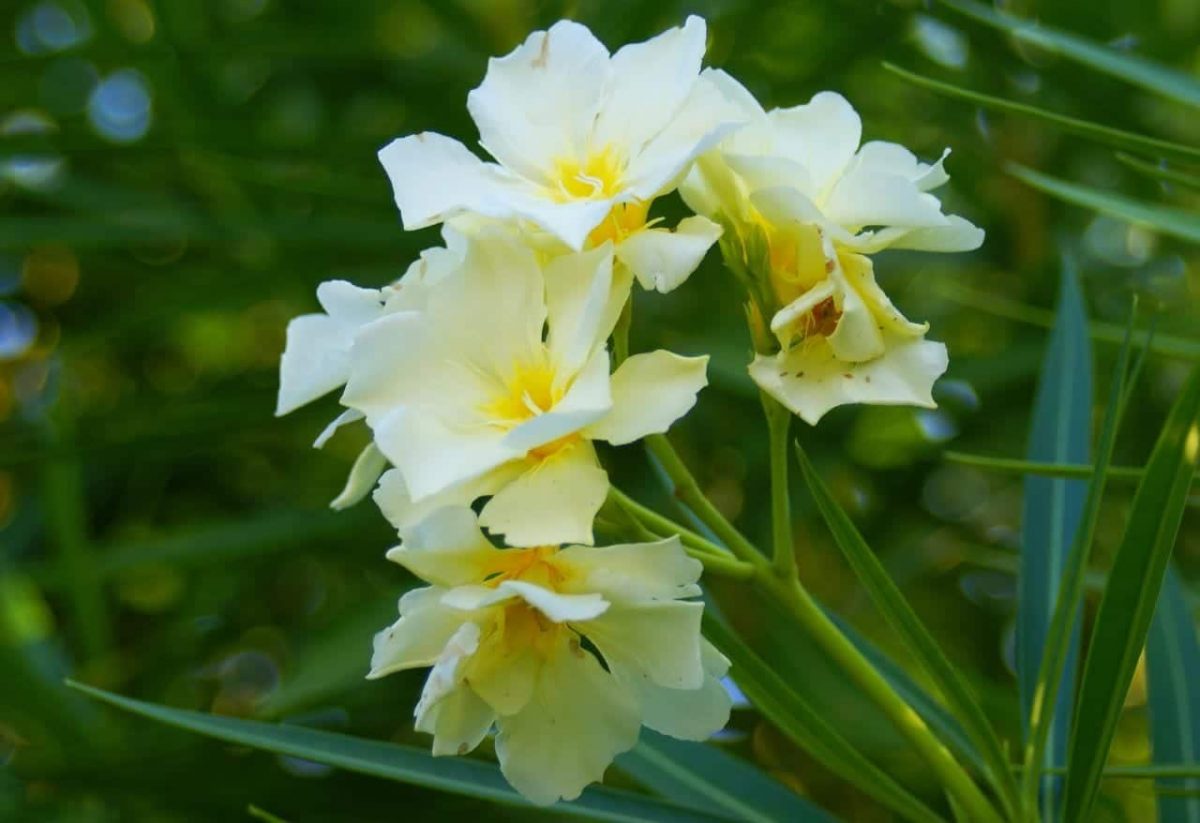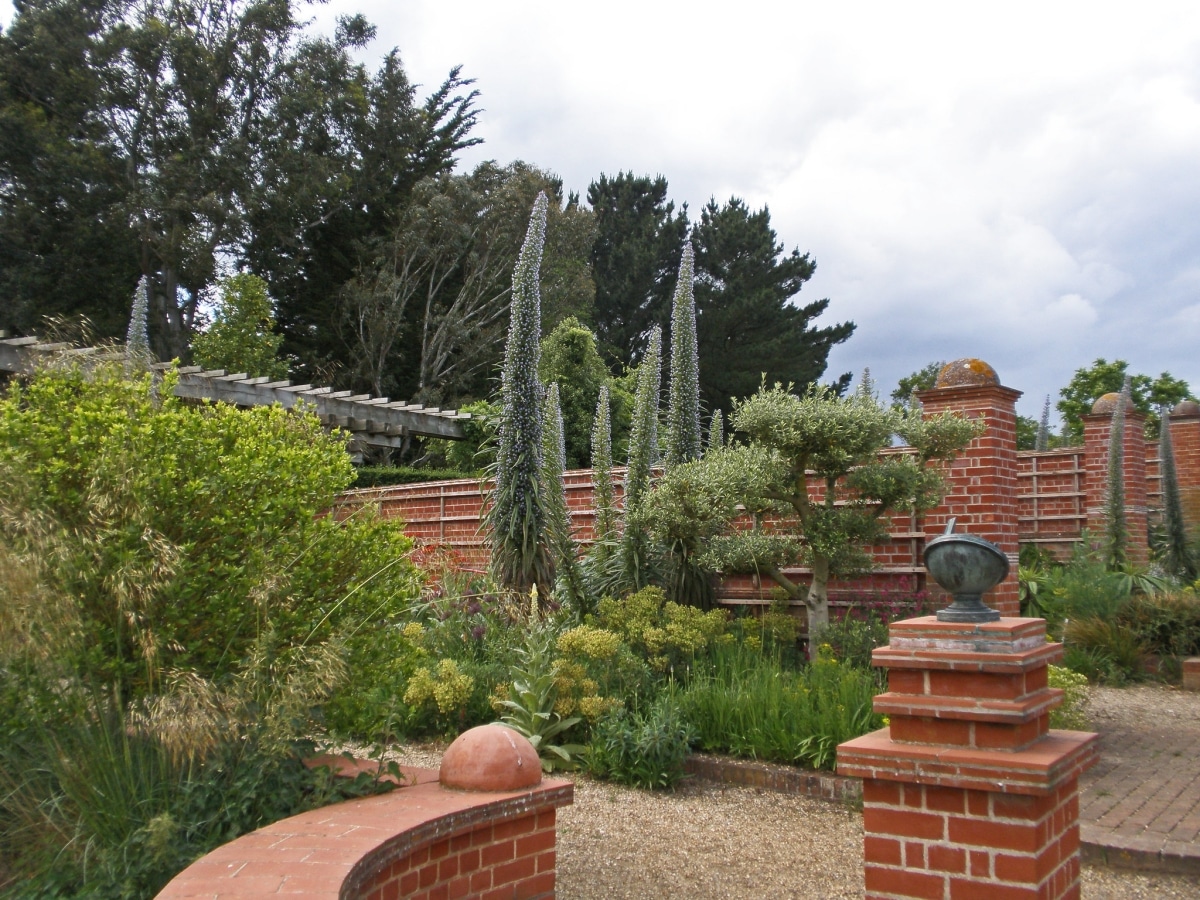
Image - Flickr / Amanda Slater
Humans and poisonous plants have always had a love-hate relationship: on the one hand, some seem so beautiful and easy to care for that we don't hesitate to plant them in our gardens; however, when they are news (and they are almost always news for having caused the death or urgent admission of someone) we do not want to know anything about them at all.
And well, from my point of view, I think that what we need is to find the middle ground, and that means learning to identify and treat them. Everyone knows that there are people who consume certain dangerous herbs for pure pleasure, without thinking about the consequences; And of course, then come the regrets. Therefore, in this article I am going to tell you which are the poisonous plants that grow in Spain.
Oleander (nerium oleander)
La oleander It is an evergreen shrub native to the Mediterranean region. It grows to about 3 meters tall, and has long, dark green, lance-shaped leaves.. It blooms throughout the summer, producing pink, red or white flowers, which is why it is widely used to beautify gardens.
Now, all parts are toxic if ingested, being able to end at least with stomach pain. In extreme cases, the heart can stop and, consequently, the person can die.
Poppy (Papaver somniferum)
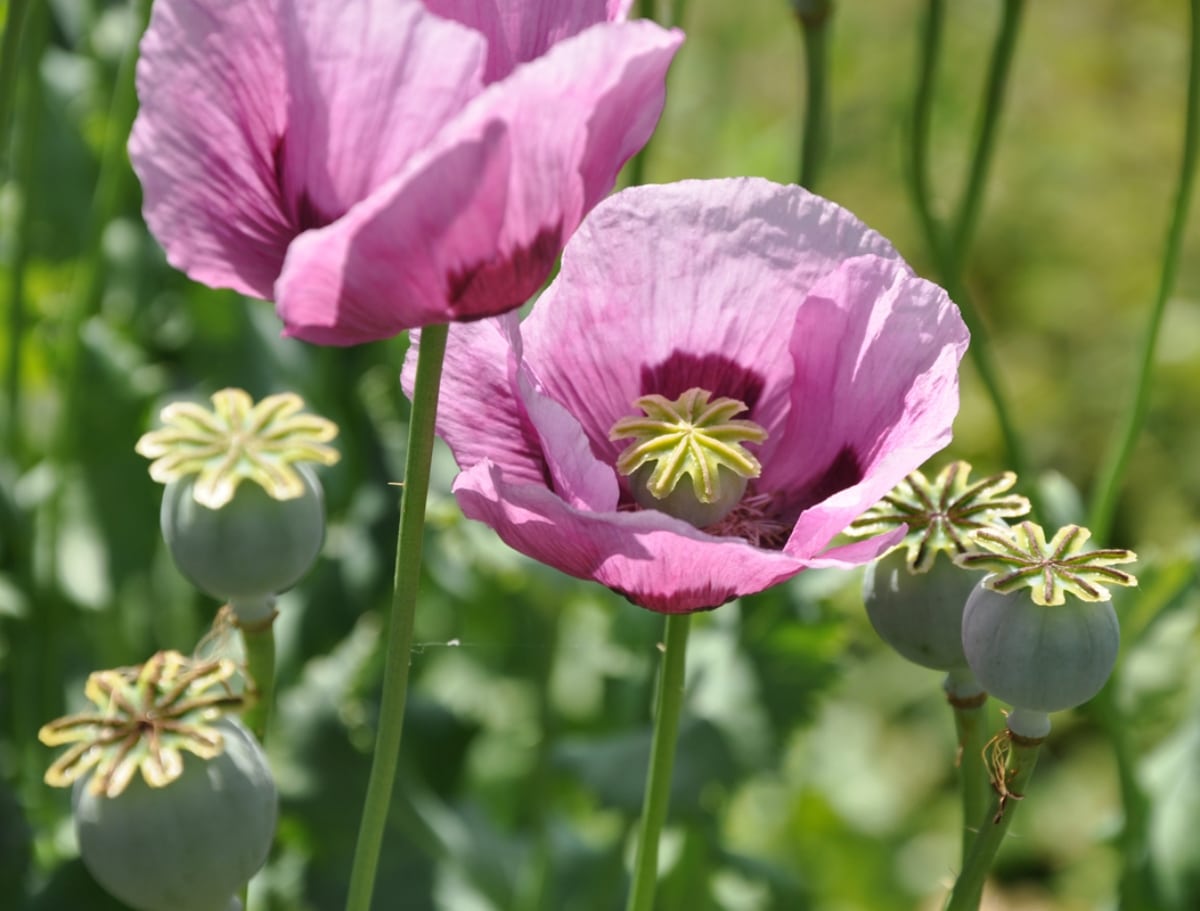
Image - Wikimedia / Linda Kenney
La poppy It is an annual cycle herb native to the Mediterranean region. It can be 1,5 meters tall, and produces lobate or sometimes pinnatisect green leaves.. It blooms during the spring. Its flowers are pink, lilac or white, and measure about 4 centimeters in diameter. Care must be taken not to confuse it with the poppy (Papaver rhoeas), because although they are genetically related, the poppy is not poisonous (it is slightly toxic if consumed raw in large quantities, but if the leaves are boiled they lose their toxicity). Also, poppy flowers will never be red.
Another important point is that of the Papaver somniferum you get a drug: opium whose long-term effects include addiction, muscle pain, constipation, brain fog, and an increased risk of heart and/or lung disease.
Anthurium (Anthurium)

Image - Wikimedia / Rameshng
El anthurium It is an evergreen shrub native to the tropical forests of America. In Spain it is one of the most popular indoor plants, since it is very decorative. It can be about 1 meter tall, and has shiny dark green leaves.. Depending on the variety, its flowers can be pink, red or black.
It is not poisonous, that is, it is not fatal, but it is it is toxic since the sap contains calcium oxalate crystals. What this does is cause irritation when it comes into contact with the skin and/or eyes. Therefore, if you are going to prune it, you should put on rubber gloves as a preventive measure.
Azalea (Rhododendron simsii y rhododendron japonicum)

Image - Wikimedia / Krzysztof Ziarnek, Kenraiz
La azalea It is a small evergreen or deciduous shrub -depending on the variety- native to China and Japan. It reaches a height of approximately 1 meter, and has small dark green leaves. In spring they produce very pretty pink, white or red flowers, which is why it is often grown in gardens and patios in Spain.
Now, it is important to say that it is a toxic plant. Both the leaves and the flowers contain a substance called andromedotoxin, which causes dizziness, asthenia, seizures, loss of coordination, low blood pressure, among others.
Cika (Cycas revoluta)

Image - Flickr / brewbooks
La cat It is a plant native to Asia that is planted in gardens in tropical, subtropical and temperate regions. It reaches a maximum height of 3 meters, although the usual thing is that it does not exceed 2 meters. It has a false trunk crowned by green, pinnate, leathery leaves. It takes a few years to start flowering, but when it does, it produces a round or elongated inflorescence depending on whether it is male or female.
It is very poisonous if ingested, so if there are small children it is better not to plant it. The symptoms can take up to twelve hours to appear, and are the following: vomiting, diarrhoea, fainting or liver failure.
Hemlock (Conium maculatum)

Image - Wikimedia / SABENCIA Guillermo César Ruiz
La hemlock It is a European herb with a biennial cycle that grows on roadsides, open fields, and similar places. It can reach 2 meters in height, and even touch 2,5m. It produces tripinnate leaves which give off a very unpleasant odour. And the flowers are grouped in inflorescences and are white.
It is a very poisonous plant. Special care must be taken with the fruits, since a few are enough for the person to lose his life. One hour after consuming it, you can have vomiting, seizures, decreased body temperature and paralysis.
Dieffenbachia (Dieffenbachia)
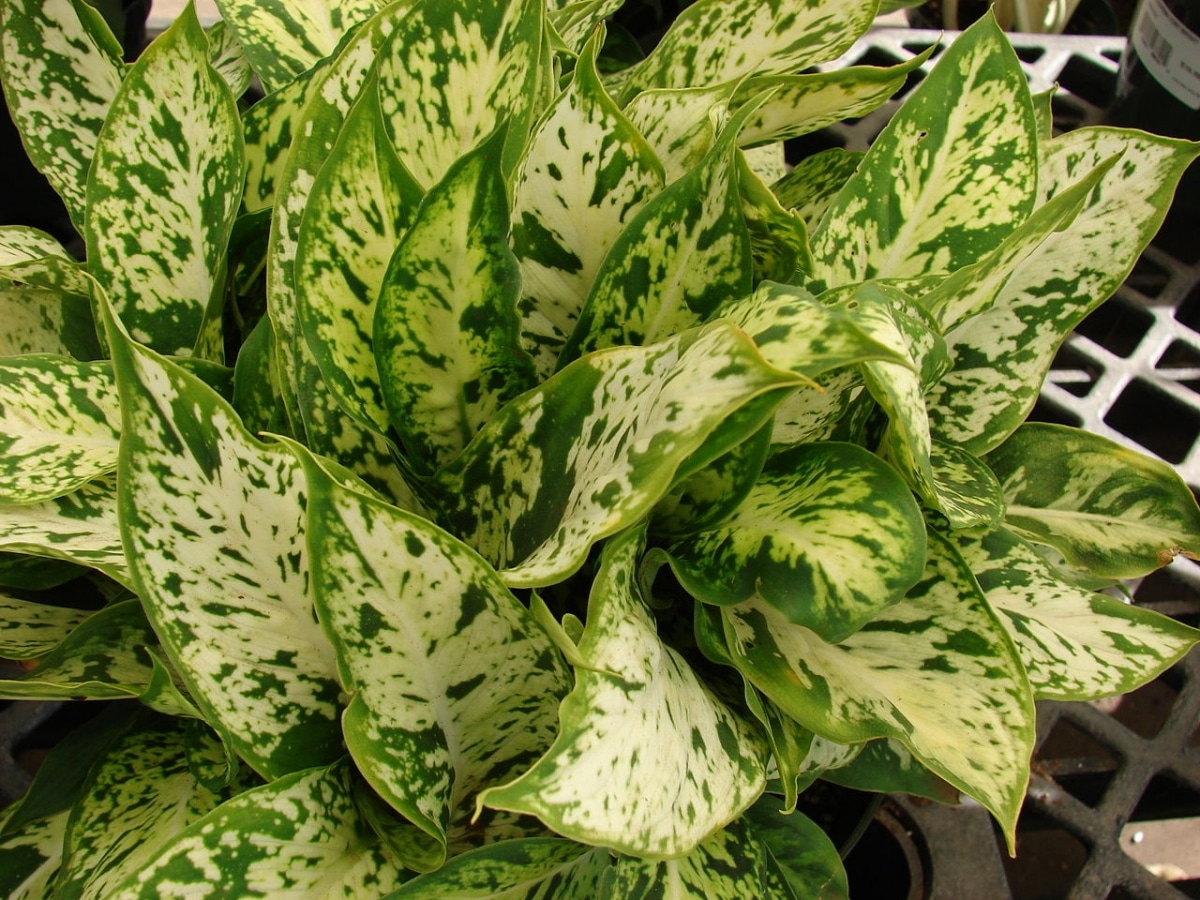
Image - Wikimedia / Forest & Kim Starr
La dieffenbachia It is another plant of American origin that we usually have indoors in Spain. Depending on the species, it can reach a height of between 2 and 20 meters in height, and is characterized by having green and white leaves. Its growth is relatively slow, so it can live without problems in a pot.
But it should not be consumed under any circumstances. Its sap has calcium oxalate crystals, which cause burning, as well as irritation if they come into contact with the skin.
Jimson weed (datura stramonium)
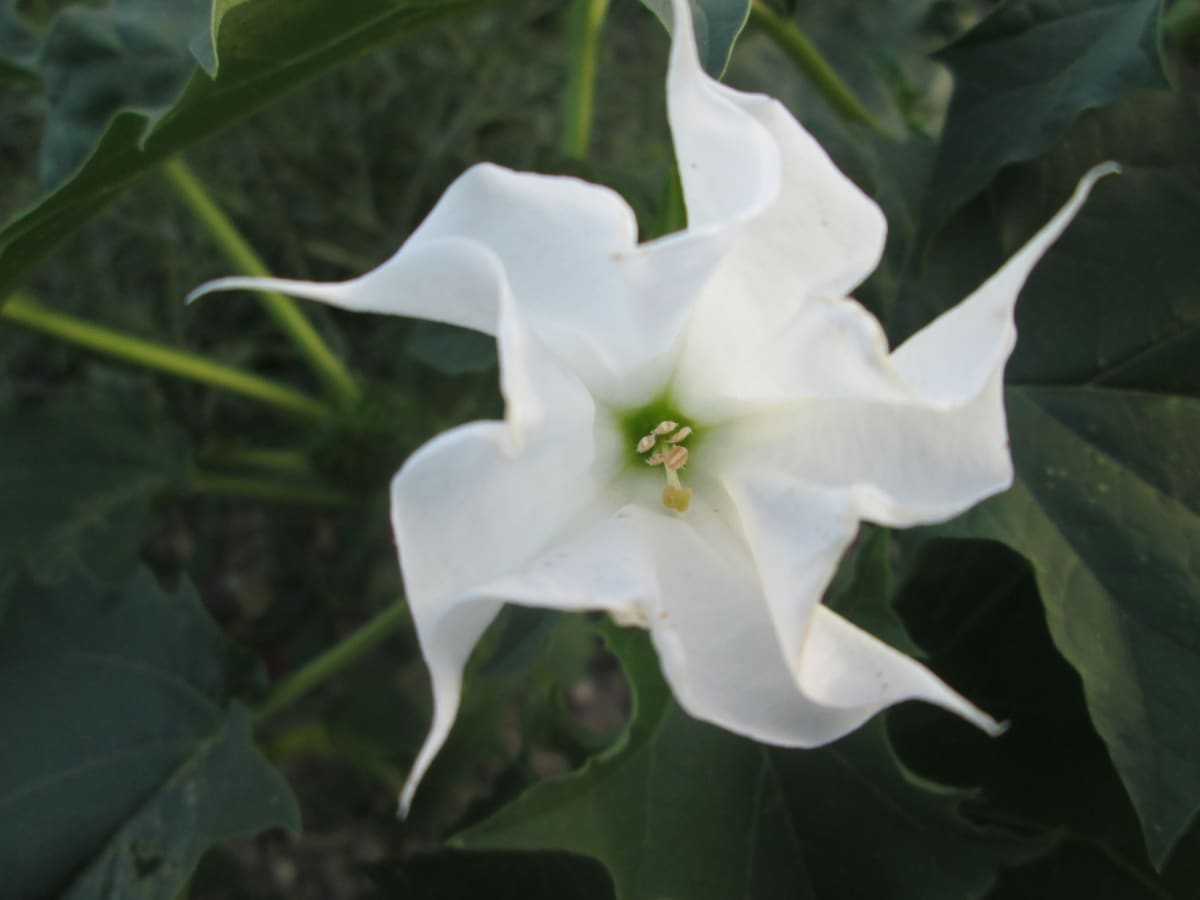
Image - Flickr / Andreas Rockstein
El stramonium It is an annual herb native to America, but it has become naturalized in many European countries, including Spain, where it grows almost anywhere: roadsides, abandoned lots, cultivated land, etc. It can reach 2 meters in height, and develops large green leaves.. The flowers are bell-shaped, white with a lilac center.
Although it has an unpleasant odor, it is often consumed due to its hallucinogenic effects. But without a doubt it is preferable not to ingest it, since in high doses it is toxic, and may cause hallucinations, rapid heartbeat, sensitivity to light (known as photophobia), agitation, and/or blurred vision.
Ivy (Hedera helix)

La ivy it is an evergreen climber that we see in private and public gardens, even indoors. It is native to central and southern Europe, as well as some areas of Africa. It is a plant that can become very large, reaching 20 meters long. The leaves are green or variegated, and can measure between 2 and 5 centimeters depending on the cultivar.
It grows in shade, so it adapts very well indoors. But it is important to keep in mind that its fruits are toxic and potentially poisonous, since in high doses they can cause coma. In less serious cases, it still causes bothersome symptoms, such as abdominal pain and diarrhoea.
Castor (Ricinus communis)
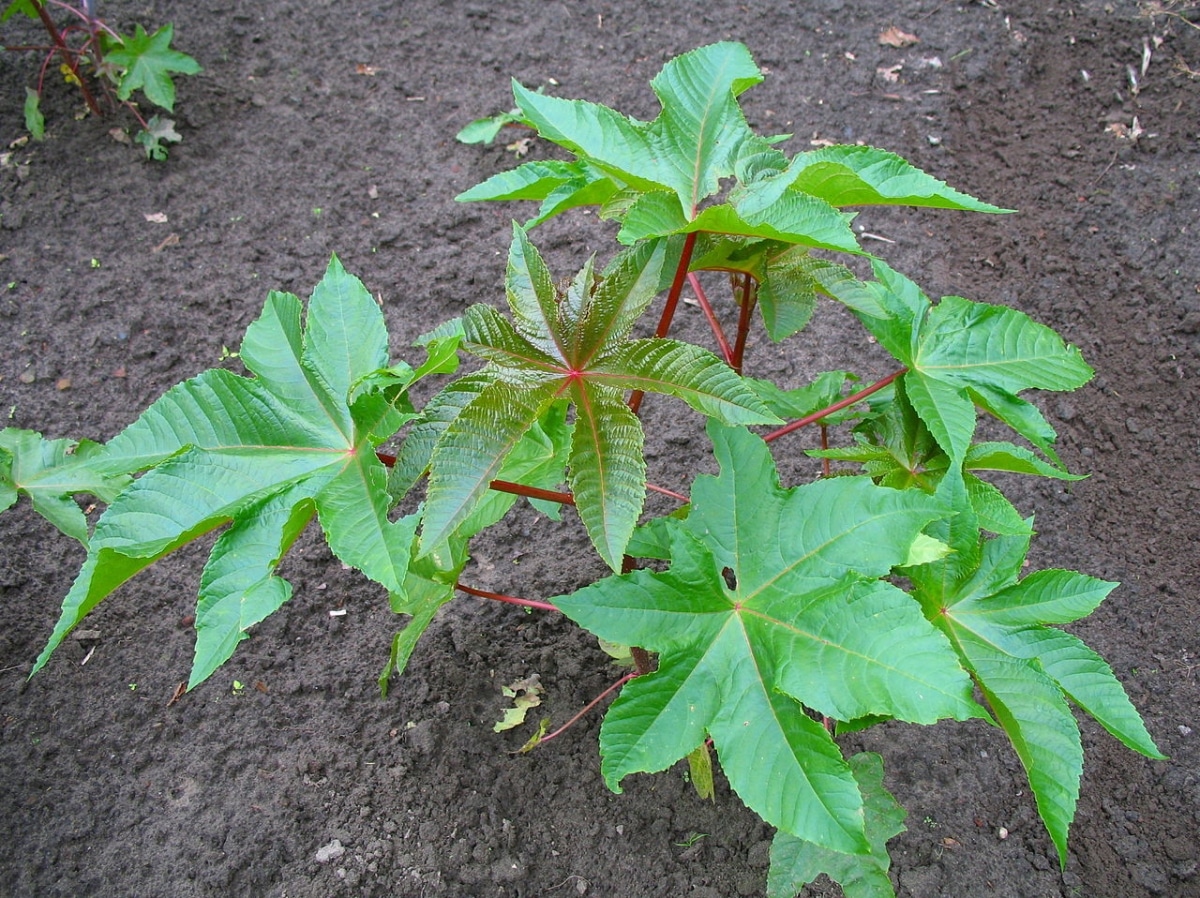
Image - Wikimedia / Marc Ryckaert
El castor bean it is an invasive evergreen shrub in Spain, therefore it is not commercialized, and when it is seen in the field it is eliminated (or should be eliminated). However, sometimes in some gardens we can find it, and you have to be careful because the seeds are very, very poisonous if ingested; In fact, a few are enough to end a serious case of gastroenteritis, dehydration, kidney or liver problems; and could even die.
The plant has an interesting ornamental value, since its leaves are palmate, relatively large, and depending on the variety they can be green or reddish. It reaches a height of 6 meters, but as it tolerates pruning very well, it is often kept shorter.
Do you know other poisonous plants in Spain?
